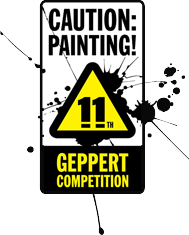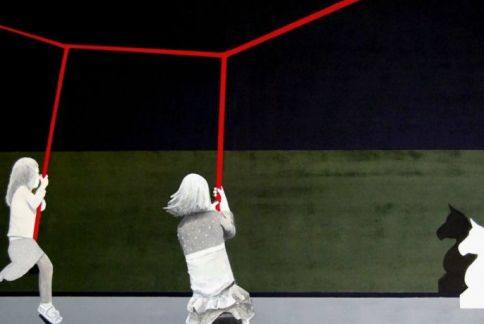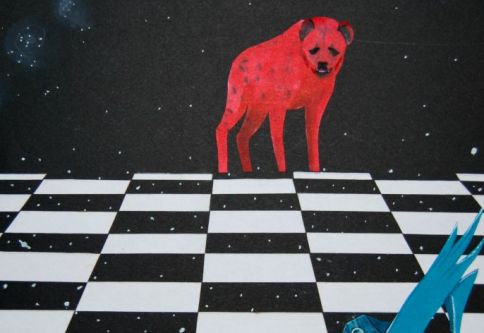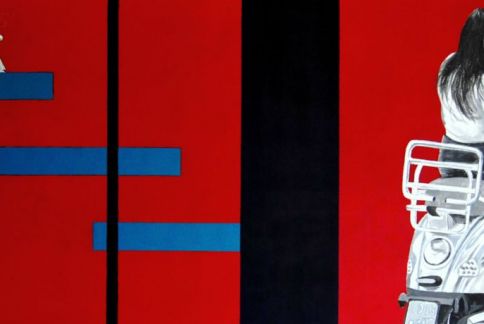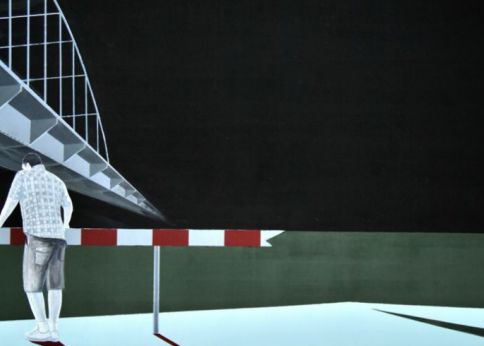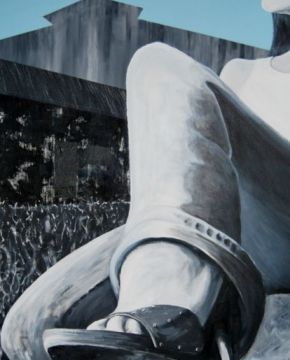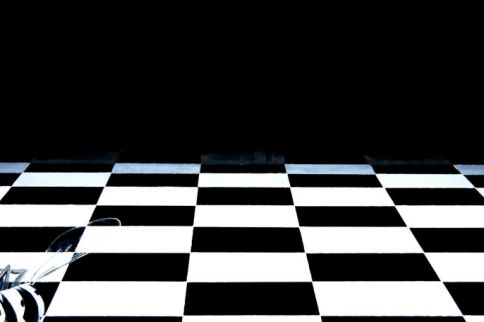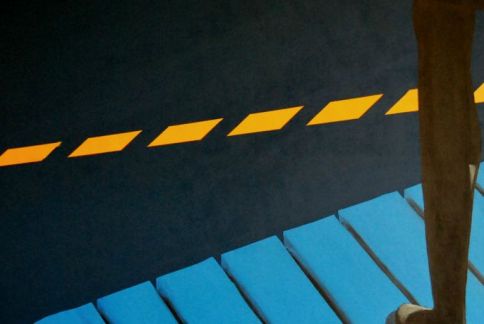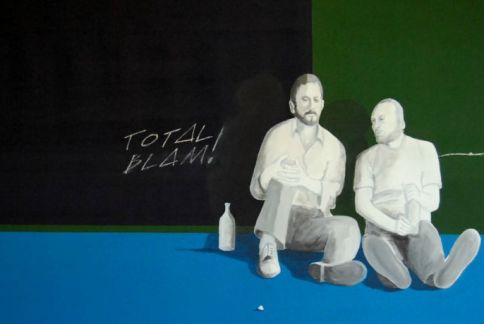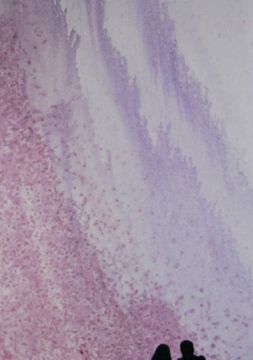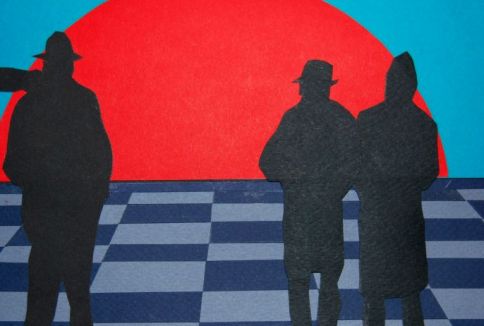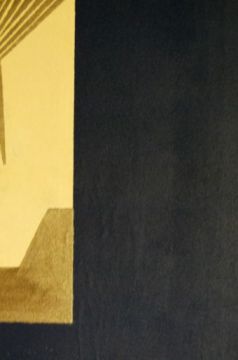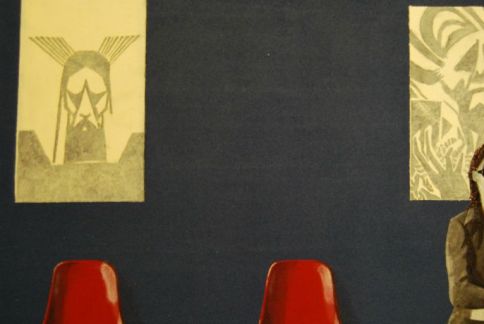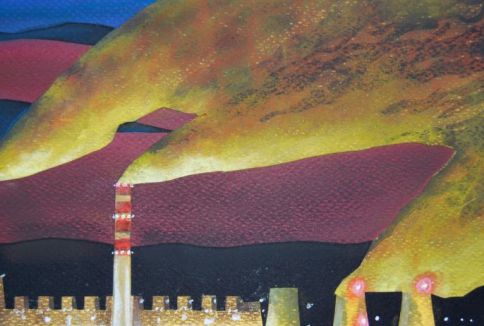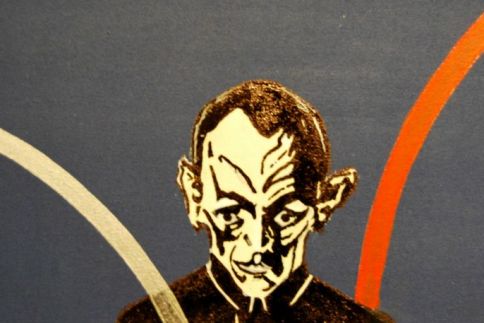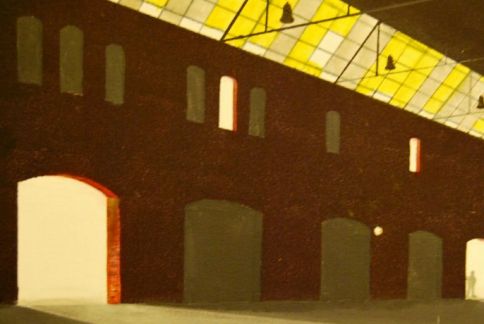Mariusz Dobrogojski
To answer the question why I am nominating Mariusz Dobrogojski (last year’s diploma student of the University of Arts in Poznań) for the Geppert Competition, allow me to quote a short analysis of one of his paintings – “Untitled (a Bee and a Jumper)” from 2012. At first sight, the picture seems simple, perhaps even banal, pretentious and kitschy. Two objects: a dead bee and a chess knight are arbitrarily put on a monotonous chessboard with a uniform, dark background. The image seems to be a distant echo of surrealism, except that it is devoid of its characteristic dreamy atmosphere. After a longer scrutiny, however, I noticed an interesting relationship between the bee and the knight. The bee appeared too big and the knight – too small. At the same time, the two things are connected with a certain interesting tension. They seem to be attracting each other, perhaps with the knight more interested in emerging to the front. Or is it us who want to move him to see whether the proportions do not get unsettled? The effect is intensified by the colour red, whose tendency to move forward towards the front of the canvas is reinforced by the light blue appearing in the furthermost parts of the chessboard, pushing the knight away. However, moving the knight forward would result in a disturbance of the picture’s balance, the foreground would become too heavy. It might lead to the acknowledgement of a lack of failure – the knight has the right proportions and has been diminished according to the principles of perspective, which is emphasized by the classic chessboard. Now we realize why the bee in the foreground has been reduced to black and white – a yellow would upset the balance. Its reduction to black and white does not surprise in the context of the omnipresent chessboard: it does not only constitute a physical basis, but is connected through its form and function with the objects placed upon it. At the same time, the slightly different, faster rhythm of the bee’s black and white delicately separates it from the surface. What is also noteworthy is the foreshortening in which the dead bee is shown, contrasted with the platitude of the knight and other parts of the painting.
After a longer observation, the picture appears to be a very interesting play with the viewer and principles of painting construction, a game played with minimum means and in an unpretentious way, even somehow nonchalantly. It seems to me that through this play Dobrogojski tries to realize the fact that the notion of painting does not only refer to the accentuated materiality of the paint and expressive work of the artist. It also refers to the issue of the painting’s construction based on colour, shape and disposition within its frame.
Piotr Bernatowicz
